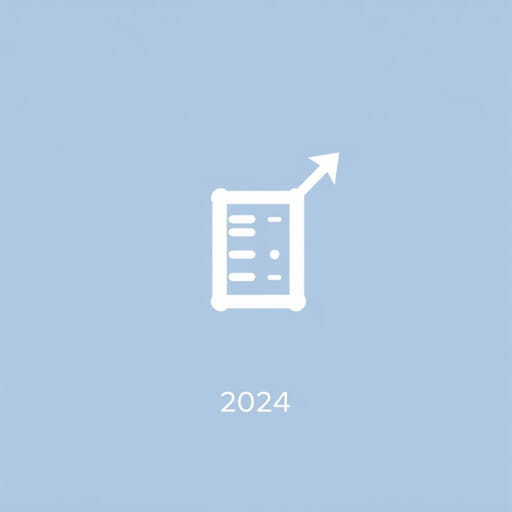Understanding how EPF (Employees’ Provident Fund) contributions are calculated in 2024 is crucial for employees and employers alike. Whether you’re just entering the workforce or managing payroll, knowing how monthly deductions and contributions are determined helps with financial planning and legal compliance. The EPF is a retirement savings scheme that ensures employees accumulate funds throughout their working years. This topic explores the calculation method for EPF contributions in 2024, updates to statutory rates, employer and employee roles, and key elements that influence the amount credited to your provident fund account.
What Is EPF?
Overview of the Employees’ Provident Fund
The Employees’ Provident Fund is a mandatory retirement savings scheme managed by the Employees’ Provident Fund Organisation (EPFO) in India. Under this scheme, both the employer and the employee contribute a percentage of the employee’s salary every month. These funds accumulate with interest and are available upon retirement or under specific circumstances like illness, home purchase, or unemployment.
Why EPF Matters
EPF offers long-term financial security for employees and encourages disciplined savings. It is one of the key pillars of retirement planning for salaried individuals. Additionally, EPF contributions enjoy tax benefits under Section 80C of the Income Tax Act.
EPF Contribution Rates in 2024
Standard Contribution Structure
As of 2024, the EPF contribution structure remains similar to previous years. The standard contribution rates are:
- Employee contribution: 12% of basic salary + dearness allowance (DA)
- Employer contribution: 12% of basic salary + dearness allowance (DA)
However, not all of the employer’s 12% contribution goes into the EPF account. A portion is directed to the Employee Pension Scheme (EPS) and the Employee Deposit Linked Insurance Scheme (EDLI).
Breakdown of Employer’s Contribution
- EPF: 3.67%
- EPS: 8.33% (subject to wage ceiling)
- EDLI: 0.50%
- Administrative Charges: 0.50%
Wage Ceiling for EPS
As of 2024, the wage ceiling for EPS remains capped at â¹15,000 per month. This means the 8.33% contribution towards EPS is calculated on â¹15,000, even if the actual basic salary is higher. Any amount beyond this limit will go directly into the EPF component.
How to Calculate EPF Contributions
Step-by-Step Calculation for an Employee
To understand EPF contribution in real numbers, let’s break it down using an example. Suppose an employee earns a basic salary plus dearness allowance totaling â¹30,000 per month.
Employee’s Contribution:
- 12% of â¹30,000 = â¹3,600
Employer’s Contribution:
- Total = 12% of â¹30,000 = â¹3,600
- EPS (8.33% of â¹15,000) = â¹1,249.50
- EPF = â¹3,600 â¹1,249.50 = â¹2,350.50
Total Monthly Credit to EPF Account:
- Employee’s EPF: â¹3,600
- Employer’s EPF: â¹2,350.50
- Total EPF contribution credited monthly: â¹5,950.50
What About Higher Contributions?
Some companies may allow employees to contribute more than 12% voluntarily. This is called Voluntary Provident Fund (VPF). However, the employer is only obligated to contribute 12%. VPF also earns the same interest as EPF and is tax-exempt under certain conditions.
Interest Rate on EPF in 2024
The interest rate on EPF deposits is reviewed annually by the EPFO. As of early 2024, the EPF interest rate remains at 8.15%, the same as the previous year. The interest is calculated on a monthly running balance but credited to the EPF account annually at the end of the financial year.
Interest Calculation Method
Interest is calculated each month but compounded yearly. If you want to estimate your yearly interest, use the formula:
- Interest = (Opening Balance + Monthly Contributions) à (Interest Rate ÷ 12)
Then, sum up the monthly interest amounts to get your annual interest.
EPF Eligibility and Compliance
Who Must Contribute?
Any employee earning up to â¹15,000 per month is required to be enrolled under EPF. Employees earning above this limit may also opt-in voluntarily. For organizations with 20 or more employees, EPF registration is mandatory. For those below the threshold, it is optional unless mandated by government notifications.
Penalties for Non-Compliance
Employers who fail to deposit EPF contributions on time may face penalties, including damages up to 25% of the amount due, interest, and even legal action by EPFO authorities. Hence, timely and accurate contribution is critical for employers.
Online Tools for EPF Contribution Calculation
To simplify calculations, various EPF calculators are available online. These tools require basic inputs such as basic salary, employer/employee contribution percentages, and interest rate. They provide monthly and annual summaries of your expected EPF savings.
Tax Implications of EPF Contributions
Employee Perspective
Contributions up to â¹1.5 lakh per year are eligible for tax deduction under Section 80C of the Income Tax Act. The interest earned on the EPF account is also tax-free, provided the withdrawal is made after five continuous years of service.
Employer Perspective
Employer contributions are not counted as income in the employee’s hands. However, any employer contribution exceeding 12% of salary and interest exceeding â¹2.5 lakh per year may attract tax.
Key Updates to Note for 2024
Higher Wage Contributions
In cases where employees have opted to contribute on actual wages instead of the wage ceiling, both EPS and EPF contributions may be adjusted accordingly. This requires a joint declaration by both employer and employee to the EPFO.
Digital KYC and UAN Linking
EPFO continues to push for 100% digital compliance. Employees must ensure their Aadhaar, PAN, and bank details are linked to their Universal Account Number (UAN) for seamless credit of contributions and withdrawals.
EPF contribution calculation in 2024 remains rooted in the 12% standard rate for both employers and employees, with slight complexities due to wage ceilings and pension allocation. By understanding how your EPF contribution is computed down to the rupee you gain control over your financial planning and retirement strategy. Always stay updated with statutory changes, interest rate announcements, and EPFO notifications to make the most of your provident fund. Whether you’re an employee, employer, or HR professional, knowing the nuances of EPF contribution is not just helpful it’s essential.
